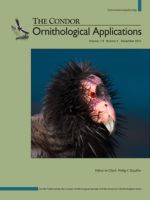Articles (3)
RESEARCH ARTICLES (11)
BOOK REVIEWS (2)
SOCIETY NEWS (2)
SOCIETY AWARDS (3)

No abstract available
No abstract available
No abstract available
No abstract available
No abstract available
No abstract available
No abstract available
No abstract available
No abstract available
No abstract available
No abstract available
